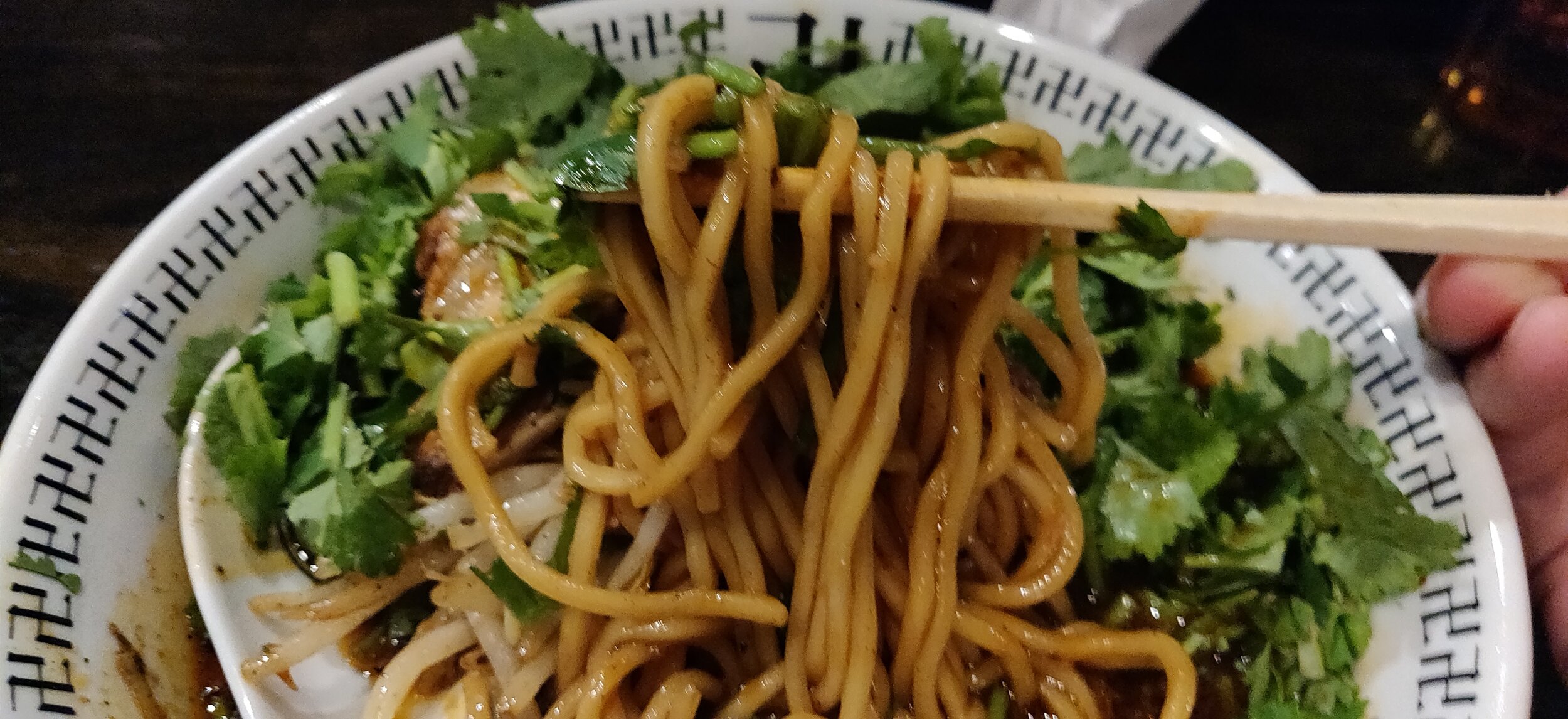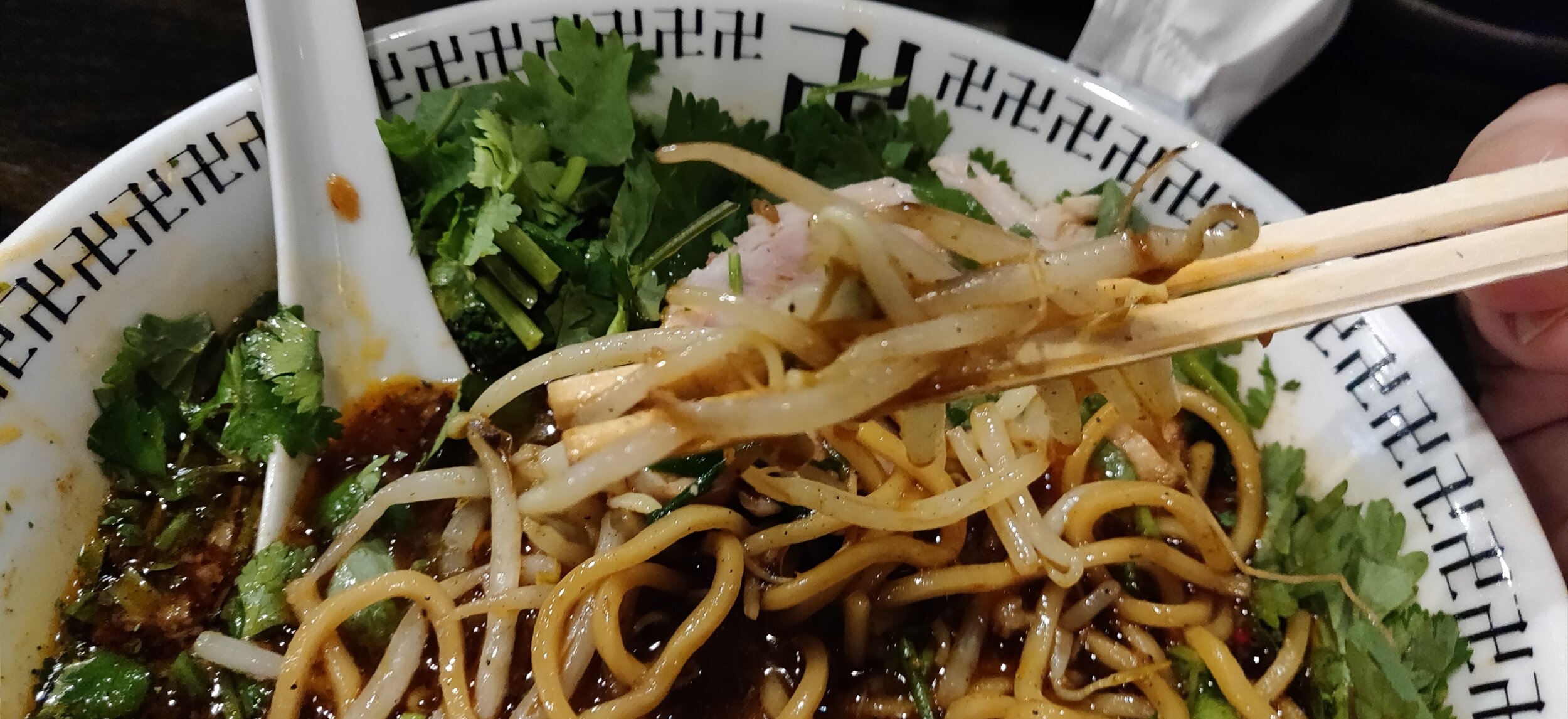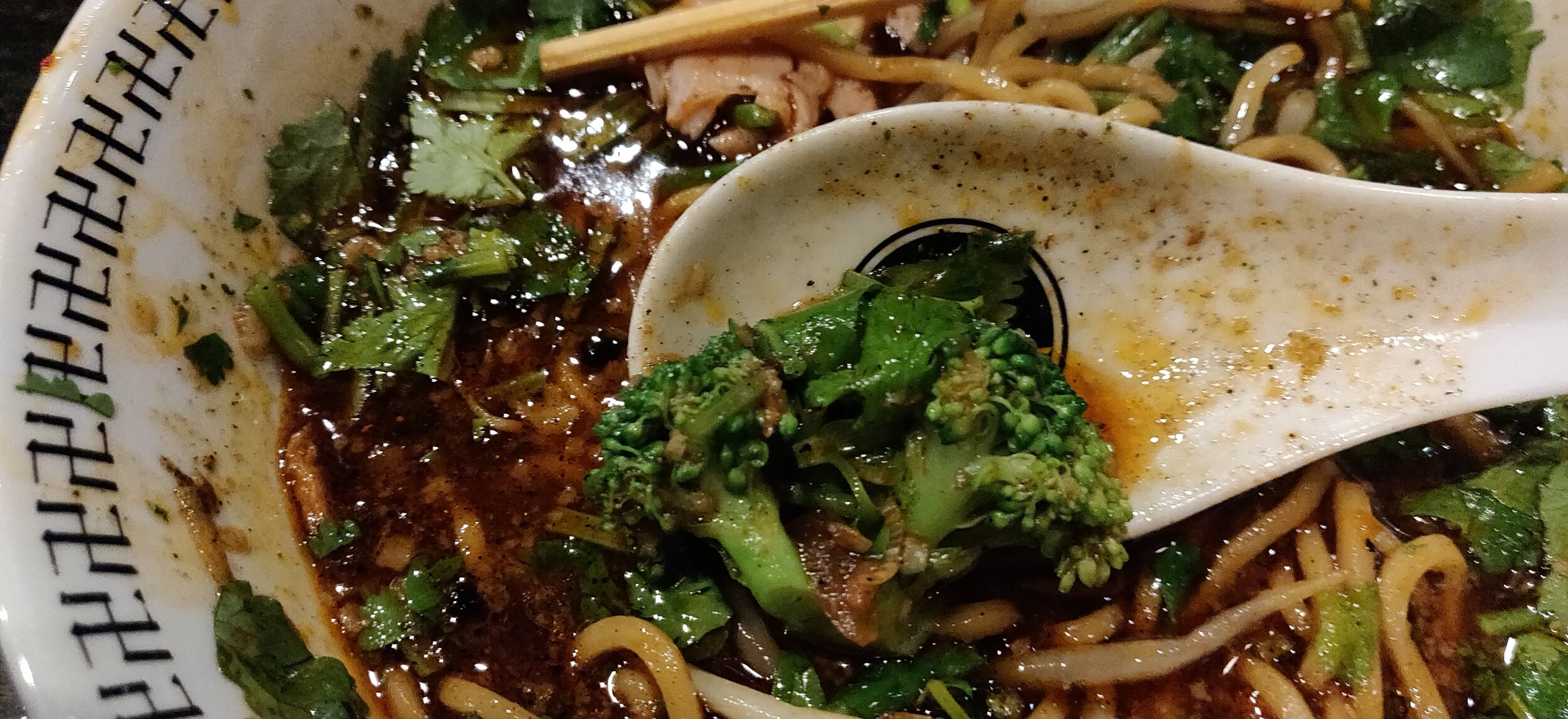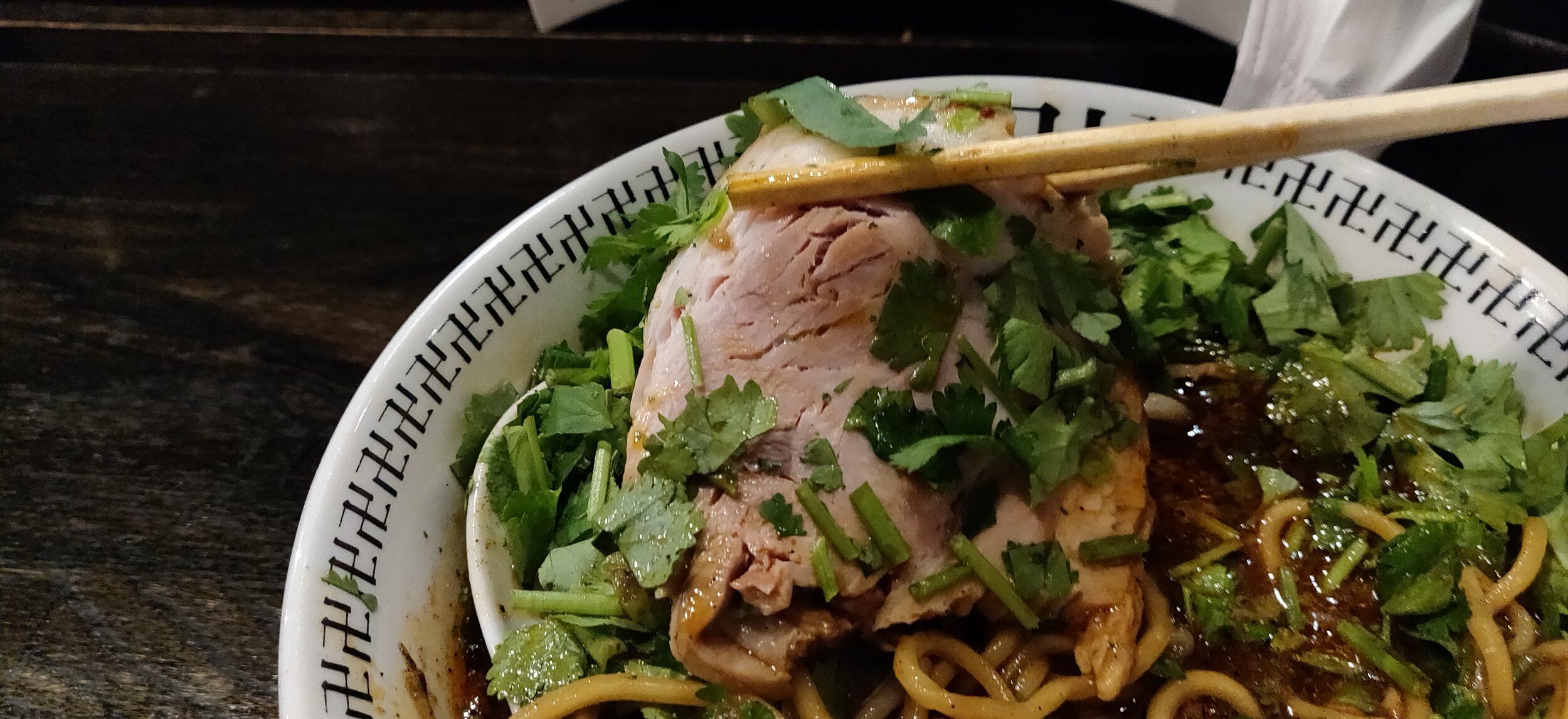Spice Ramen Manriki (スパイス・ラー麺卍力); New Contender for Top Spicy, Ethnic Ramen, Nishi-Kasai, Tokyo
So some of you out there might be thinking I’m late to the party visiting Manriki and you’re absolutely right. I’m embarrassed to say I held off my visit to Manriki because of how far it is from my home/work as well as the fact that it’s in the middle of nowhere, giving me no reason to visit besides to eat at Manriki. However, a friend wanted to make a visit and I figured better late than never, so I finally crossed this off my to-go list late last year. At first it was purely to satisfy my urge to knock off every shop on the Tabelog Top 100 list, but I’m definitely glad I made a visit as this may have topped my personal spicy (?), ethnic (?) style ramen ranking. To be fair, Kikanbo was the only other ramen shop on this list as there isn’t really a lot of these Southeast Asian/Spice infused/inspired places worth visiting, but Manriki definitely set the bar for best in class. And if it wasn’t already obvious with how similar the bowls are, the master did in fact train at Kikanbo before opening up his own ramen shop. In my honest opinion, I think Manriki is a step above Kikanbo, so any Kikanbo fans should definitely make a visit. Manriki Honten is located near Nishi-Kasai station of the Tokyo Metro Line and is open everyday from 11:00 am to 9:00 pm. Given their expansive opening hours, Manriki is a nice shop to fill in your gaps in your schedule as you can avoid the lunch and dinner rush hours, but be warned that there isn’t a whole lot to do in the area.
Thankfully, Manriki predicted their popularity among foreign customers and translated their menu in English so I won’t be providing a translation of their ticket machine. However, I did include a photo of the machine above in case you wanted to check out their menu beforehand. While it looks expansive, the base of the ramen is more or less the same regardless of which one you decided to order. The differing prices is based on the different toppings included n the bowl. You can also customize your bowl yourself by choosing and purchasing the each topping item individually in addition to your ramen order. I am a huge sucker for both spice and cilantro so I decided on the regular ramen with 2x spice and heavy cilantro. I’ll apologize in advance for my ridiculous photo of my ramen, I just couldn’t help myself.
So pictured above is my ramen (lol). Again, let me reiterate that this is not what the ramen looks like regularly. I decided on the heavy cilantro topping option which is why it looks more like a bowl of cilantro with a side of ramen. Nonetheless, the flavors underneath is the same so I will try and review the bowl as if I had ordered without. Side note, if you’re not a fan of cilantro, whether you don’t like it or you can’t eat it to begin with, you can substitute the cilantro for spring onions. They will take the cilantro out of your bowl completely so be sure to let them know if you have would like to sub it out beforehand when you hand them your order ticket. Since I don’t have a great photo of the bowl without the cilantro, I’ll just describe what toppings came in my bowl. My bowl with only extra spice and cilantro as side topping came with two slices of pork chashu, a healthy portion of blanched bean spouts, and a broccoli (singular) as topping. Underneath the topping was my healthy 140g-ish portion of noodles and an oily, viscous ladle of soup.
The stock is a chicken, pork, and seafood base prepared specifically to handle the different chilis and spices incorporated before serving. I wouldn’t necessarily call it thick, but the stock has a lot of body and depth evident in the mellowing afternote you get after the initial shock of the spices subsides. Since the stock can stand on it’s own, it does work as a balanced bowl without the chilis and spices so if you’re not the biggest fan of spicy ramen, Manriki can still be enjoyable for you. However, since the soup is technically made for spice, if you love a nice, fiery kick, I definitely recommend this bowl. The obvious spice pairing, especially with the use of cilantro, is cumin and turmeric, so it does remind you a bit of Southeast Asian curry, but not so much that would make you think you’re just eating curry over ramen noodles. There are a bit of Chinese influence in the bowl as well with a decent amount of tingle from the Szechuan peppercorns, but I thought it was subdued in comparison to the chilis which can kick this bowl in to high gear if you add too much of it. All of these spices are sautéed with the soup right before serving, much like a Sapporo Miso ramen, and is then ladled in to your bowl with the noodles. Since the spices are adjusted based on your topping options, Manriki is able to make balanced soups every time, which is something I really appreciated.
Noodles were medium thick, long noodles which paired with the spicy soup nicely. Each strand holds it’s shape in the soup, not soaking up more than it needs to and helps to calm the spices down a bit between bites. I thought the noodles had a nice bounce to them which gave the bowl a nice texture and it flowed with the toppings perfectly. The crispy bean sprout, chewy pork chashu, and melty broccoli all played off of the springy noodles beautifully. I did find it odd that I had one, singular piece of boiled broccoli in my soup, but it wasn’t as if it was out of place in my bowl. It soaked up the flavorful soup nicely and I enjoyed what it brought to the table from a flavor perspective, but I would have liked at least a couple pieces so I could get a more rounded idea of how it worked with the other components of the bowl. Pork chashu isn’t anything to write home about on it’s own, but it’s place in the bowl was vital. Maniki uses more of a drier cut for the chashu and it soaks up the soup like a sponge. While it adds the reminiscent pork flavors, it doesn’t have an overpowering marinade so it acts as a great vessel to get more soup in your mouth, as quickly as possible. Bean sprouts were also a nice touch as it has neutral flavors, so again, it acted more as a vessel for the soup and ensure the spiciness remained the star of the show.
Finally, since I did get the extra cilantro and spice level, I’ll talk in regards to my extra topping. If you love spicy, definitely add on the spice level. As it was my first time eating at Manriki, I didn’t go overboard and only ordered the 2x spicy, but if you’re a real spicy lover, I think getting 3x would still be quite enjoyable. You might be wondering if I regret ordering so much cilantro and the answer would be no. Honestly, the zesty addition of the cilantro was a nice cut from the spicy soup and it paired each other beautifully. By the end of the bowl, I was hoping I had some cilantro left behind at the bottom of the bowl as the intensity of the spices resting at the bottom needed something like cilantro to cut through it. If you’re a fan of cilantro, I definitely recommend getting as much of it as I did.
Overall I honestly think this was one of the most well-balanced bowls of spice filled ramen I’ve ever had. I am a huge fan of Kikanbo and it is probably one of my favorite ramen shops in Tokyo, but Manriki definitely unseated it as king and I will be dining here whenever I have the urge for spicy, ethnic ramen. Manriki has a second location out towards Akihabara so if you’re looking for lunch in between shopping in the anime district of Tokyo, I recommend a visit. If you’re new here and looking for ramen recommendations, be sure to check out my eBook of my Top 15 Ramen shops to visit in Tokyo. All profits go towards helping fund my self published ramen coffee table book! Thank you in advance and hope you enjoy all the ramen Tokyo has to offer!







